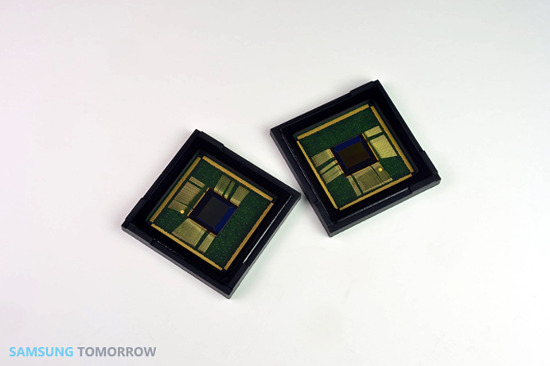Featured Products
Samsung improves the image sensor for mobile cameras with a new technology called ISOCELL
Cameras on mobile devices, smartphones and tablets, are pervasive, people use them day by day to such degree and the compact cameras market is shrinking and most likely heading towards extinction. However, a problem remains: the small space available in a mobile device requires a small image sensor, which directly affects the image quality.

The new ISOCELL image sensor from Samsung.
Competition is tough and the megapixel race requires manufacturers to cram more and more physical pixels in the already small CMOS sensor. The way to achieve this is to decrease the pixel size, but for a smaller pixel it is harder to capture light and take a good photo.
Of course, the manufacturers do not stay still but they continuously work to improve the image quality of their cameras. The current solution is Back Side Illumination or BSI in short. Now Samsung is upping the ante with a new innovation, called ISOCELL.
Technology makes for better mobile photography and better pictures
As its name suggest, ISOCELL is isolating the pixels on the sensor, effectively creating a physical barrier between neighboring pixels. This is expected to enable more photons to be collected from the micro-lens while minimizing the undesired electrical crosstalk between pixels (up to 30% according to Samsung), and also allowing expanded full well capacity (FWC) which translates into a greater dynamic range.
Samsung provided a sample image, showing the effect of the new technology, which has a somewhat HDR-like look and a better image quality compared with traditional BSI.

Comparison: image quality of a traditional BSI sensor and the new ISOCELL.
On top of that, the new ISOCELL sensor is better at dealing with light coming at larger angles of incidence: it can accept a 20 percent wider chief ray angle (CRA), providing the benefit of reducing the height of the camera module. As a result, mobile devices with such a camera can be thinner than ever and more portable.
Soon on the market, new mobile devices with improved picture taking abilities
The first ISOCELL image sensor, the 8 megapixel S5K4H5YB with 1.12 um pixels and a 1/4 inch optical format is currently sampling to hardware partners with mass production scheduled in Q4 2013, so premium devices featuring it should appear on the market later this year or early next year. The timing makes it a likely candidate for Samsung’s next flagship device, the Galaxy S5.
Of course, the real abilities of the new sensor are to be seen after the devices will hit the market and are used in real-life situations, so stay tuned for more news on the topic.






































